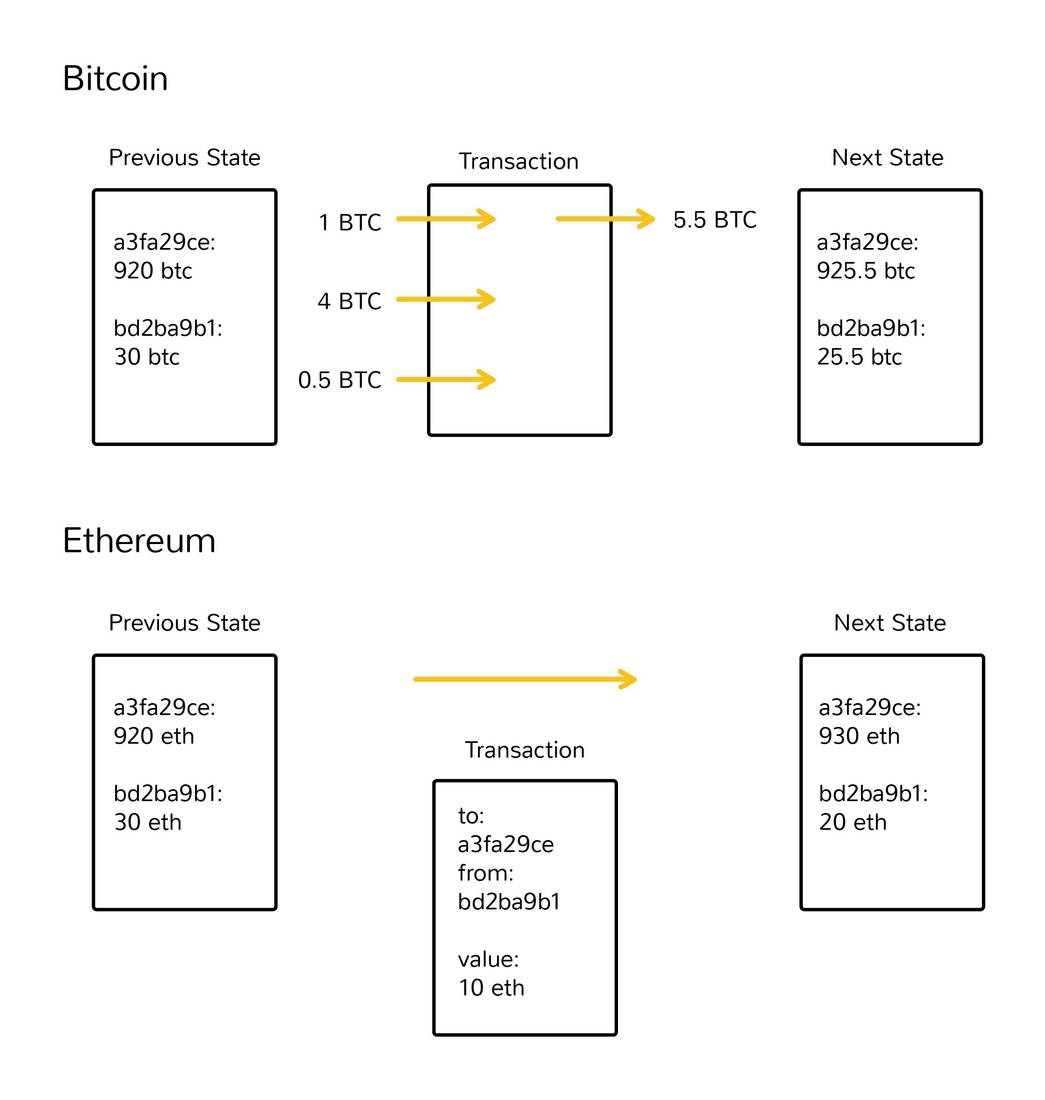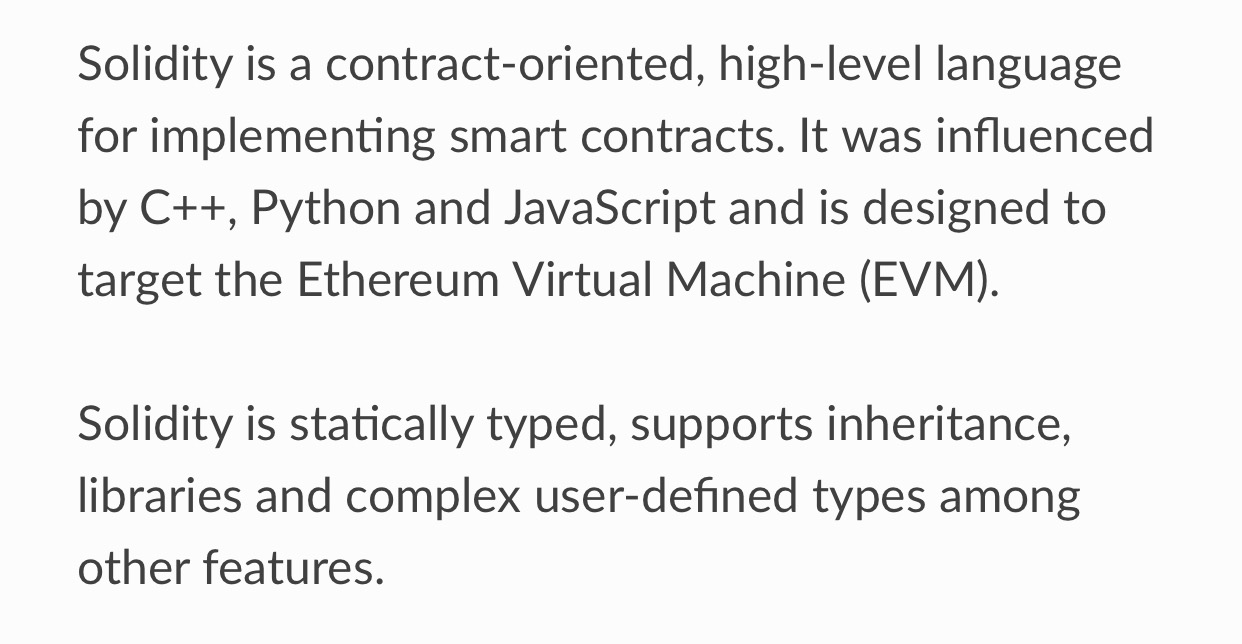-
Writing and deploying Ethereum based smart contracts is becoming easier with the object-oriented language called Solidity. Thus, Blockchain developers have begun to make use of solidity for Ethereum Smart Contracts extensively.
What is Ethereuem?
Unquestionably, you've heard of the blockchain technology and its potential to be the gamechanger. Blockchain technology came before Bitcoin when introduced in 2008. Ethereum is a decentralized blockchain based platform that keeps smart contracts stable. It enables blockchain developers to develop decentralized applications (DApps) which protect against fraud and hacks and eradicate third parties. Moreover, the decentralized Ethereum blockchain makes every node within the network its server, without requiring any central authority. It means that every transaction gets secured using a hash, which only existing network nodes can sign. Ethereum's blockchain follows a similar concept to bitcoin's, which means it's a distributed ledger of transactions histories.
Also Read: Ethereum Smart Contracts: Best Use Cases Of The Second Generation Blockchain
Now, let's get deeper into Ethereum's principles
Considering Ethereum and Bitcoin having similar ecosystems, let's draw a classification chart which presents their differences. While Bitcoin uses unspent transactions to assess how many coins nodes have, the Ethereum network takes accounts. Understand it with this picture.
 Contrary to Bitcoin, the Ethereum blockchain can communicate with smart contracts as well as their deployment. So, to read or execute any contracts, blockchain developers trigger the Ethereum Virtual Machine (EVM). EVM works as an engine of the network, which validates transactions (along with contract-creation transactions), ensures security, and assures that the Smart Contract work similarly on each node.
Contrary to Bitcoin, the Ethereum blockchain can communicate with smart contracts as well as their deployment. So, to read or execute any contracts, blockchain developers trigger the Ethereum Virtual Machine (EVM). EVM works as an engine of the network, which validates transactions (along with contract-creation transactions), ensures security, and assures that the Smart Contract work similarly on each node.The boons of using Ethereum for Blockchain development
As we continue to understand the cryptomarket, Ether comes second after Bitcoin as a cryptocurrency in use worldwide. Even though it came into existence after five years of Bitcoin, Ehtereum has tasted unprecedented success. Here are a few reasons to understand, why?
Its widespread adoption::
Jeremy Allaire, co-founder, and CEO of FinTech predicts that Ethereum has the potential to take over the internet someday. According to Allaire, Ethereum is one of the reasons for Blockchain's popularity in the internet sphere. Ethereum has opened a market for new opportunities. It enables the smooth development of DApps (decentralized applications) as well as provides the ability to issue tokens. Also, new frameworks of financial-contract development now seem feasible with Smart Contract technology.
Cost-effective::
Likewise Bitcoin's mining, it's the nodes on Ethereum blockchain that mine Ether (Ethereum's Cryptocurrency). Ether is the fuel of the system. As soon as the NP-class problem gets solved by the miners, Ethereum sets a fee (gas) to allow the addition of the solved transaction to the blockchain. Although the gas price per operation remains fixed, it does fluctuate as per the market conditions. By spending more gas, you can significantly decrease the confirmation time taken for your transactions. It's because miners prioritize transaction with higher gas amounts in the transaction pool.
Time-Consumption::
While Bitcoin's block-mining time is approximately ten minutes, Ethereum takes only fourteen seconds to mine an Ether block. Although parties involved need to get 30 confirmations of the transaction to get Ether, time consumption is comparatively quite low. Overall, Ehtereum presents itself as a sophisticated platform for decentralized applications and smart contracts development.
Smart Contracts::
For making the Ethereum ecosystem live and functioning, developers resort to writing Smart Contracts. Developers write functions and commands that get activated, self-executable, and deactivated as per certain pre-determined conditions. In a nutshell, a Smart Contract refers to as a set of codes that works like a self-executing computer program, along with eliminating the use of intermediaries. In general, the issue with a tradition treaty law is security, which Smart Contracts help ensuring. In blockchain, a Smart Contract is a digital asset which is deployed to store, receive and execute payments and funds. Briefly, smart contracts run on the Etheruem blockchain with their address and balance itself. One of its functions sends and receives money. And when a Smart Contract gets its function trigger, it gets activated.
Implementing Smart-Contract::
In Bitcoin, Smart Contracts get written in C++ or Java programming languages. Here, the Smart Contract works as payment channels, multi-signature accounts, or a multi-party lottery having no operator. Sidechain is a technology that makes RootStock, a similar platform to Bitcoin. A Smart Contract written for RootStock is in the same league as to a Smart Contract on the Ethereum Blockchain.
Solidity Programming Language
Originated by Gavin Wood in 2014, Solidity has become the most preferred choice (programming language) of Ethereum developers for writing Ethereum Smart Contract creation. However, JavaScript, C++, and PowerShell do have some influence on its development. Solidity is a statically-typed, Turing-complete blockchain programming language. For Ethereum Virtual Machine to read Solidity, its compiler turns it into bytecode. If you have some expertise of writing code in an object-oriented language, it won't be much hassle to start using Solidity which is a contact-oriented language. It's because of the similarity between the contract and the OOP class. [caption id="attachment_3007" align="alignnone" width="700"]
 Source:: https://applicature.com[/caption] By utilizing its features, blockchain developers can create blind auctions, multi-sig wallets, crowdfunding events, and the like. It's worth mentioning that Solidity remains constrained in string function. As per the solidity documentation, it would be better to use bytes for raw-byte data, arbitrary-length, and string for arbitrary-length string data. And, if possible, reduce the length and make use of bytes1 to bytes32, as they are comparatively cheaper.
Source:: https://applicature.com[/caption] By utilizing its features, blockchain developers can create blind auctions, multi-sig wallets, crowdfunding events, and the like. It's worth mentioning that Solidity remains constrained in string function. As per the solidity documentation, it would be better to use bytes for raw-byte data, arbitrary-length, and string for arbitrary-length string data. And, if possible, reduce the length and make use of bytes1 to bytes32, as they are comparatively cheaper.Using Solidity for Ethereum Smart Contracts::
As mentioned above, Ethereum Virtual Machine (EVM), Ethereum's ecosystem for executing transactions and smart contract code validation, runs smart contracts through each node. Let's examine it in details that how a relatively young programming language Solidity for Ethereum smart contracts should be structured. The first line in the contract highlights the Solidity compiler version employed for drafting this code. “Pragmas” are the direction for the compiler code execution method.
pragma solidity ^0.4.24;In the further lines of code, we assign that this is a smart contract for token creation. Set token balance mapping (key -> value pair); the key is referred to as an ETH address, and its value is displayed by a token balance. The instructions you see will store the balance of each token holder:contract ERC20StandardExampleToken { mapping (address => uint256) balanceOf;The following action is to establish the complete amount of tokens you are willing to circulate:uint256 public totalSupply;“String” commands will arrange the name of your token and its representation. The token's representation is shortened from the name. None of them is unusual; consequently, there is a chance of finding two tokens of the identical name. The only element that differentiates one from the other is their respective ETH address.string public name; string public symbol;The “constructor” function is a sort of entry. It runs the contract when deployed to the blockchain.constructor uint256 _totalSupply, string _name, string _symbol ) public {Now, designate values from a constructor to the smart contract local variables:totalSupply = _totalSupply; name = _name; symbol = _symbol;Then, place the balance of the contract creator to _totalSupply. After the line presentation below, the proprietor of the contract will get the accumulation of tokens on his/her balance:balanceOf[msg.sender] = totalSupply; }When performing the ERC-20 token standard, the “transfer” function requires to produce 2 parameters: _to (for the token receiver) and _amount (for the number of tokens that need to be transferred):function transfer(address _to, uint256 _amount) public {The “require” statement obliges for verifying that the receiver is not a zero address, and the quantity of tokens for transfer is greater than zero:require(_to != address(0)); require(_amount => 0); balanceOf[msg.sender] = balanceOf[msg.sender] - _amount; balanceOf[_to] = balanceOf[_to] + _amount; } }For any help, queries or suggestion, contact us here.A few more reads: Setting up Ethereum Tester for Blockchain Testing | Blockchain Developers Guide An Easy Guide to Connecting the Ethereum Wallet to a Private Blockchain Hire The Best Ethereum Developers Using These Tips

Our Offices
INDIA
Emaar Digital Greens, Sector 61,
Gurugram, Haryana
122011.
Welldone Tech Park,
Sector 48, Sohna road,
Gurugram, Haryana
122018.














